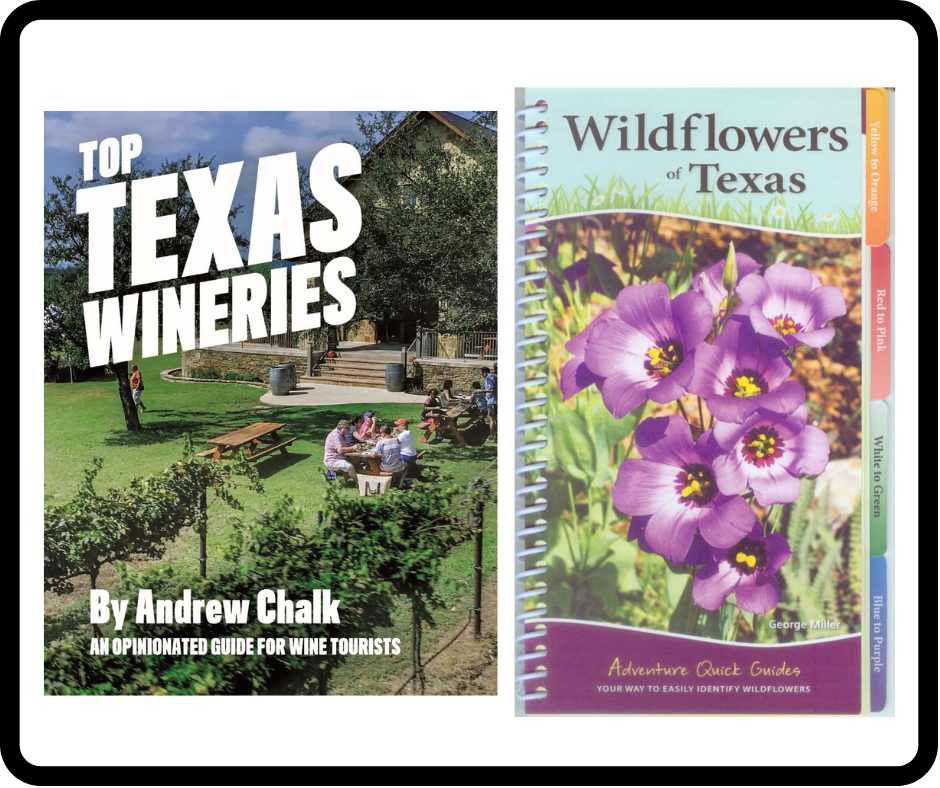
One of the keys in determining which wineries made the author’s list is that they refrain from selling wines labeled (in small print) “For Sale in Texas Only,” indicating a wine not produced from Texas grapes.
“The quality of Texas wine is higher than ever,” writes Andrew Chalk in his compact, authoritative, and controversial Top Texas Wineries: An Opinionated Guide for Wine Tourists (Great Texas Line Press, $6.99 paperback, 104 pages).
I say “controversial” because Chalk doesn’t include every Texas winery, including some of the most popular and productive ones. He focuses on forty-three that he believes are making the best wine using Texas grapes. And then he narrows the list to what he considers the sixteen “best of the best” and writes longer profiles on those wineries.
One of the keys in determining which wineries made the author’s list is that they refrain from selling wines labeled (in small print) “For Sale in Texas Only,” indicating a wine not produced from Texas grapes.
Here are the sixteen wineries, in alphabetical order, which made his “best of the best” list: Bending Branch Winery (Comfort), Brennan Vineyards (Comanche), Duchman Family Winery (Driftwood), Fall Creek Vineyards (Tow and Driftwood), Haak Vineyards and Winery (Santa Fe, Texas), Hilmy Cellars (Fredericksburg), Inwood Estates Vineyards (Fredericksburg), Kiepersol Estates (Tyler), Lewis Wines (Johnson City), Llano Estacado (Lubbock), McPherson Cellars (Lubbock), Pedernales Cellars (Stonewall), Perissos Vineyard and Winery (Burnet), Ron Yates Winery (Hye), Wedding Oak Winery (San Saba), and William Chris Vineyards (Hye).
For the full list of forty-three, or for more details on the sixteen, you’ll have to read the book.
Chalk also had high praise for Messina Hof Winery & Resort in Bryan, calling founder Vincent Bonarrigo “the Walt Disney of the Texas wine industry.” Messina Hof, Chalk writes, used to feature a good many “For Sale in Texas Only” wines but in recent years has shifted to 100 percent Texas grapes and is “winning more medals than ever.”
“The fact that Messina Hof can make the shift,” he says, “serves as a lesson to other large Texas wineries.”
Wildflowers: Adventure Publications has released a handy, inexpensive guidebook called Wildflowers of Texas ($9.95 spiral-bound). The author is botanist and nature photographer George Miller, who has written six guidebooks on Texas and the Southwest.
With a pocket-sized format and thirty-six durable cardstock pages, Wildflowers of Texas is a convenient quick-reference book to keep in your car’s glove compartment.
It is organized by color tabs (yellow to orange, red to pink, white to green, and blue to purple) with eight small color photographs to a page and the popular name and concise three-line description of each flower, 248 of them. For more depth, the author offers an interactive iBook on his web site, Travelsdujour.com.
“This Quick Guide,” the publisher writes, “will help you put a name to the beautiful wildflowers that decorate the state.”
Glenn Dromgoole writes about Texas books and authors. His latest book is “Book Guy: One Author’s Adventures in Publishing.
